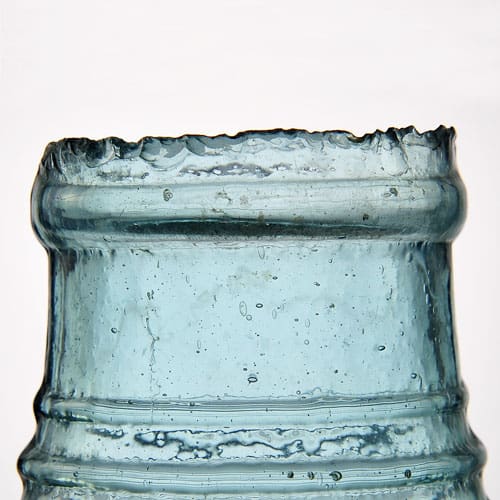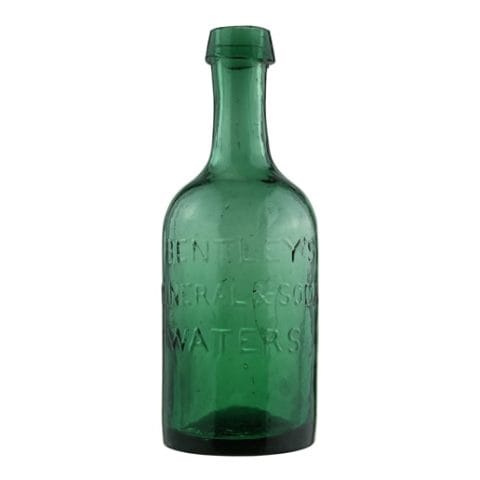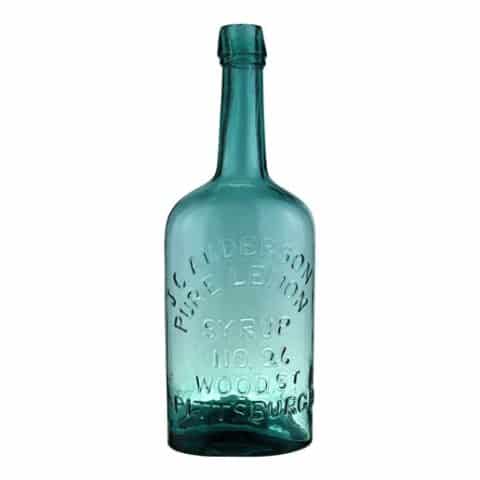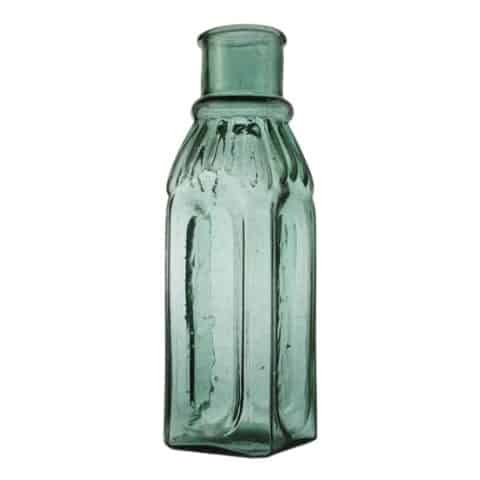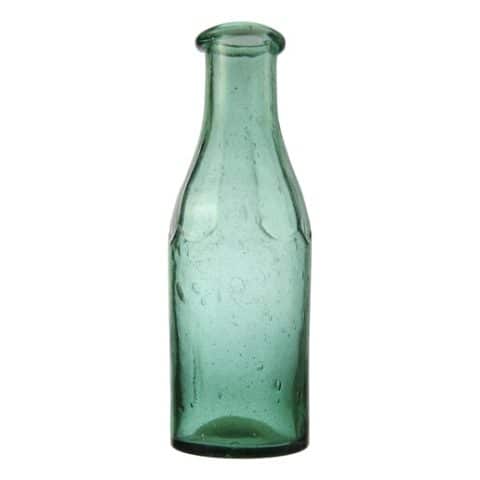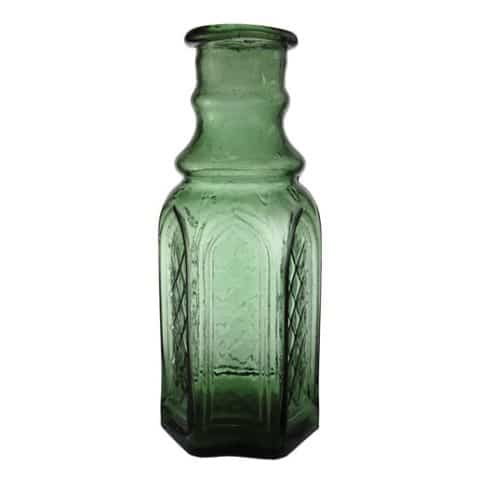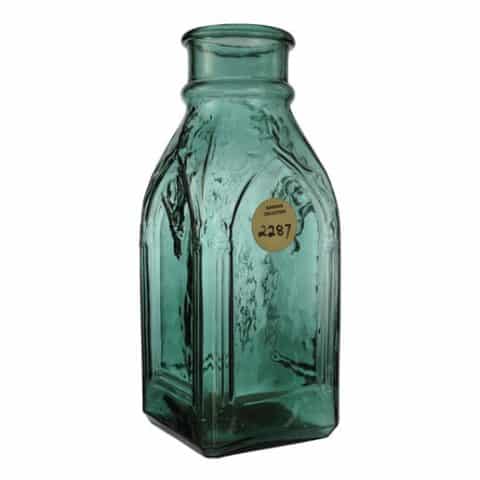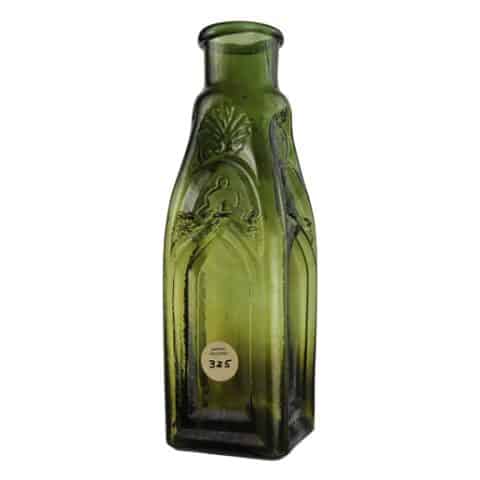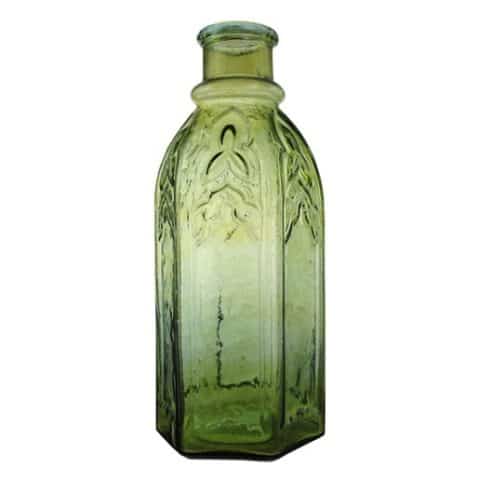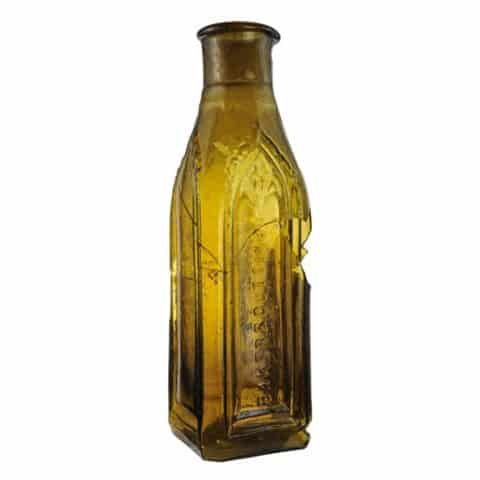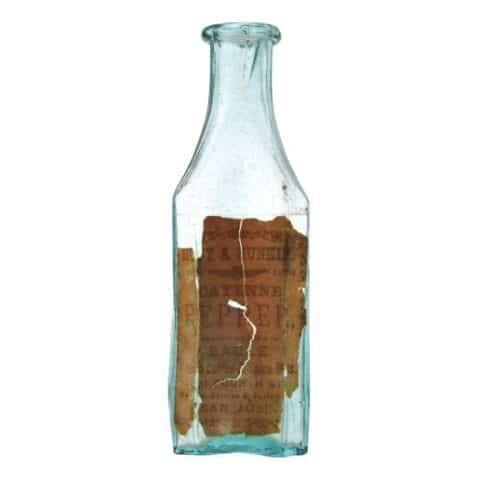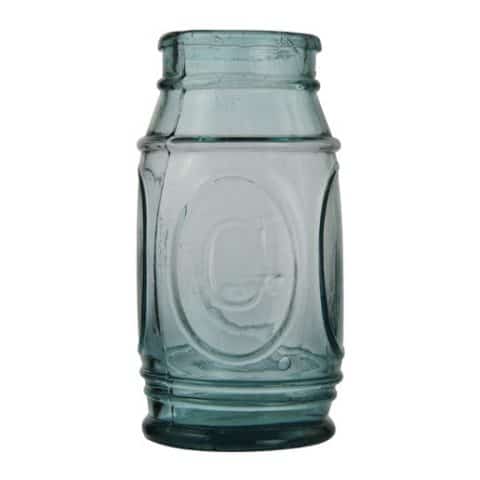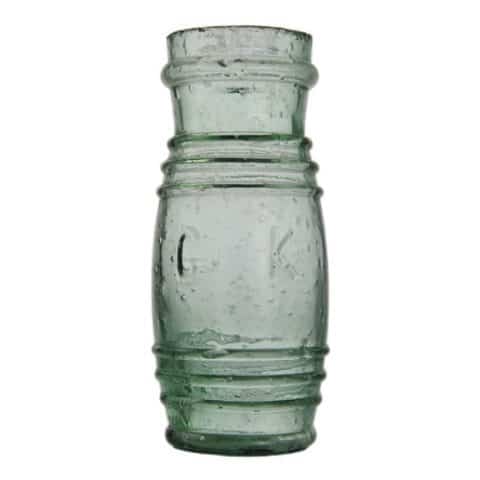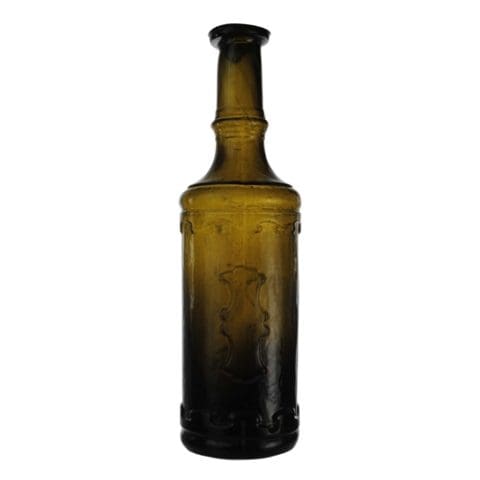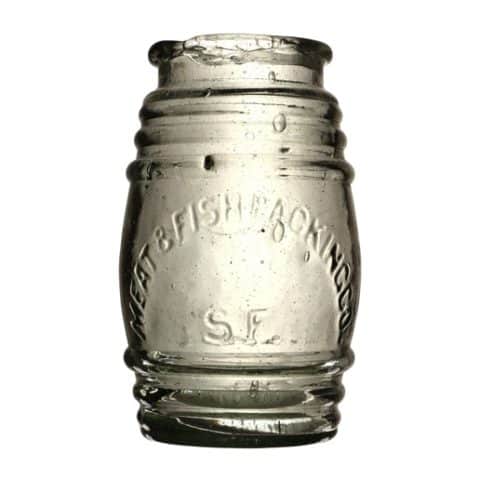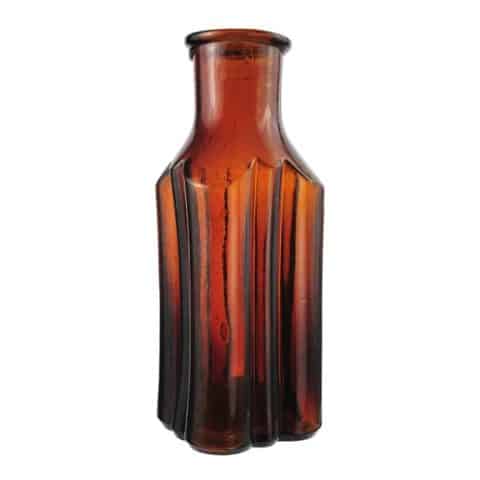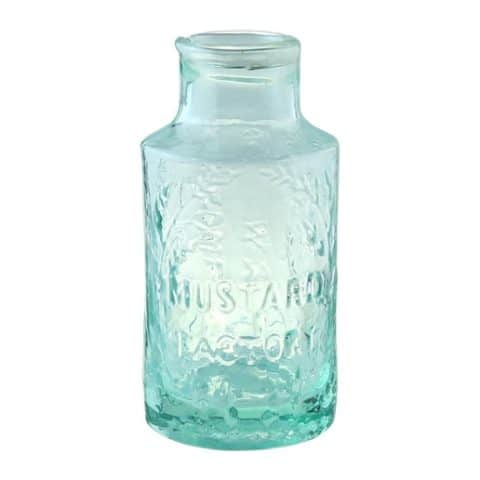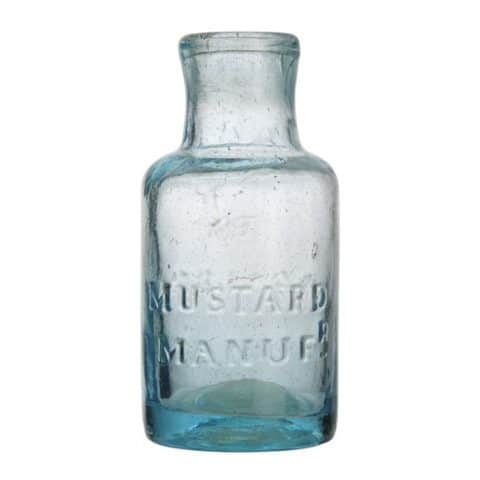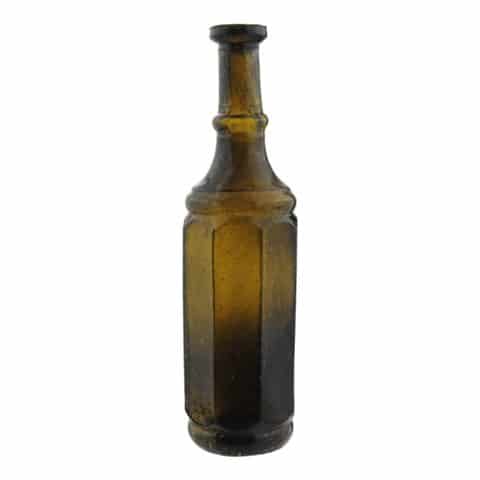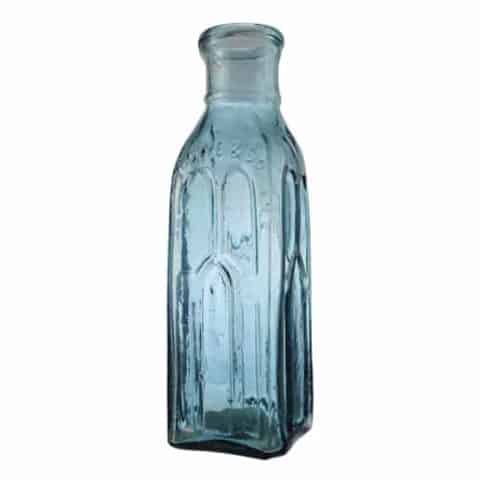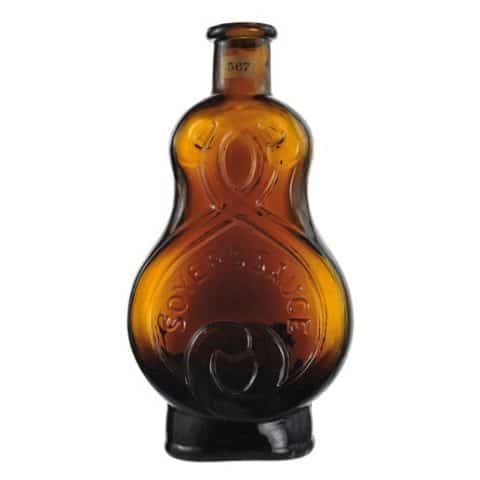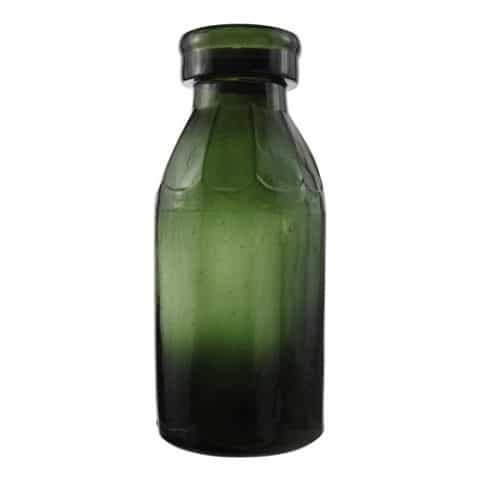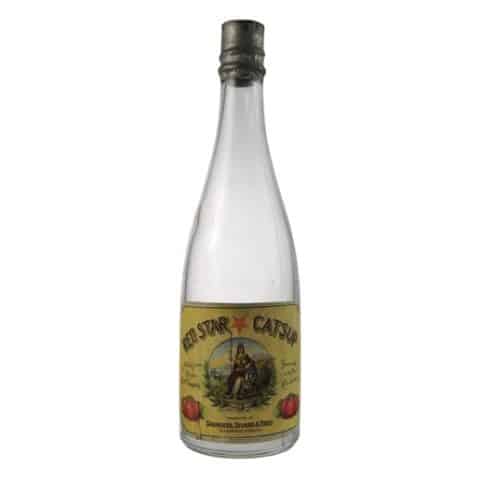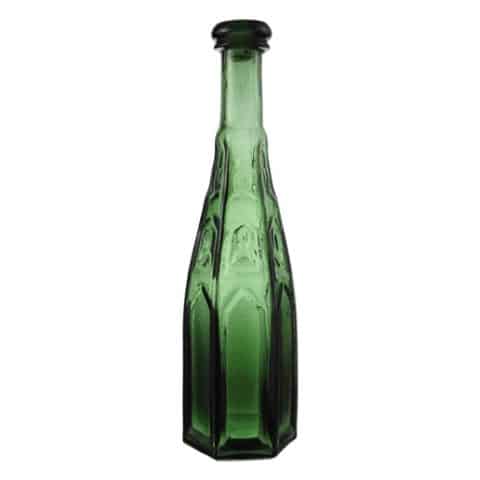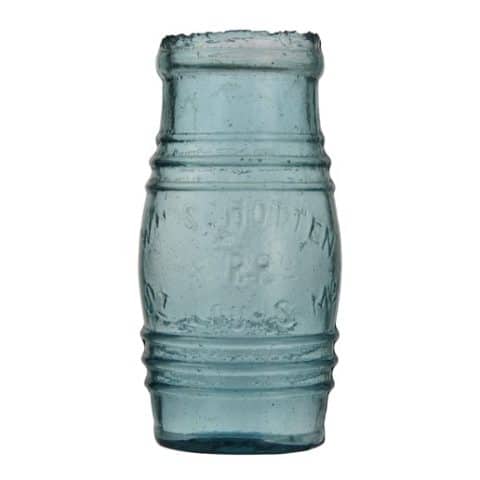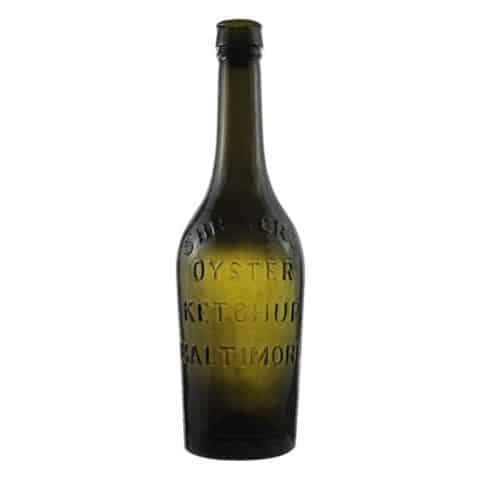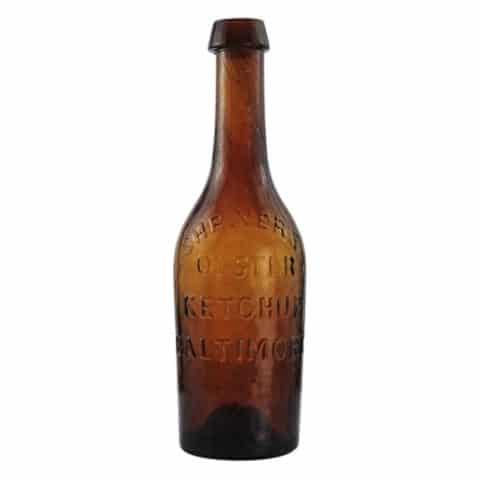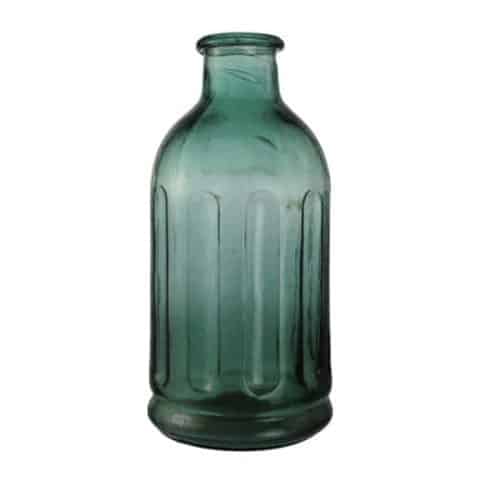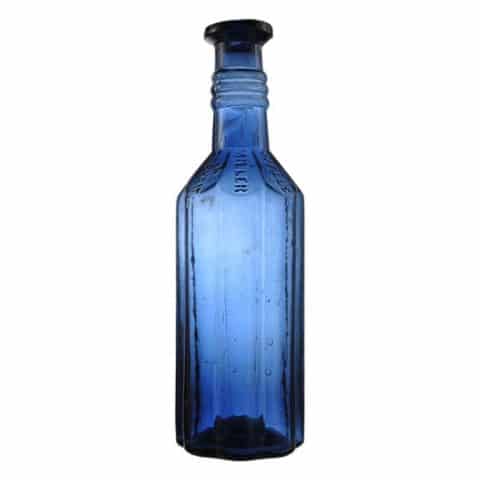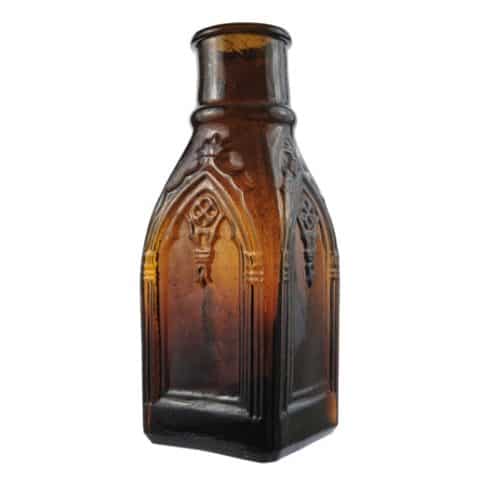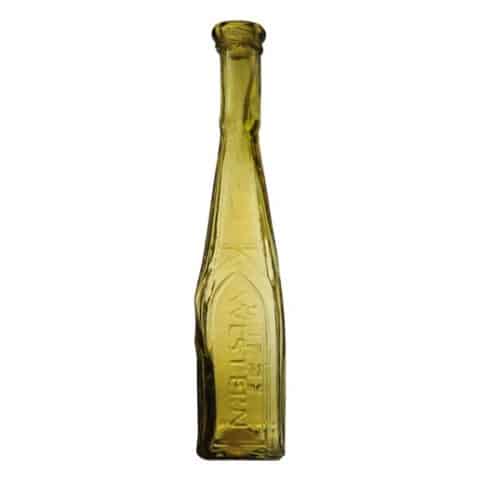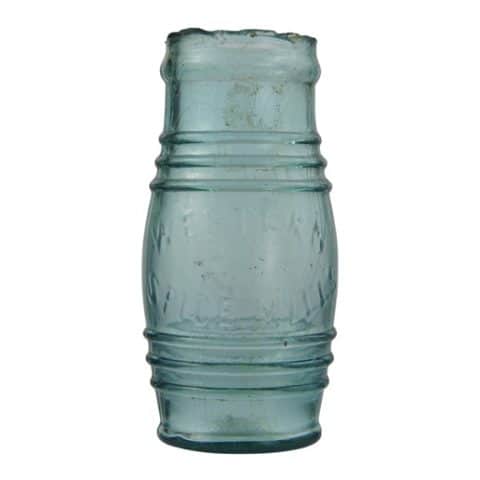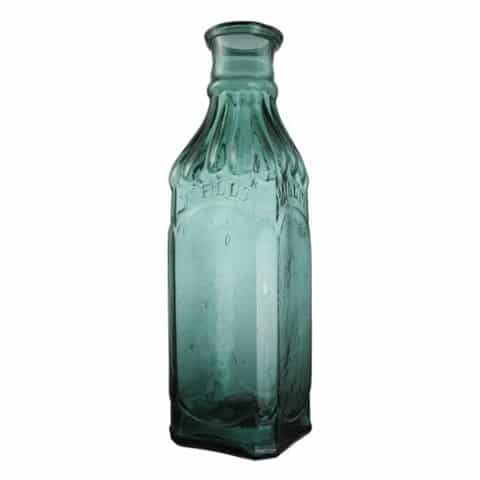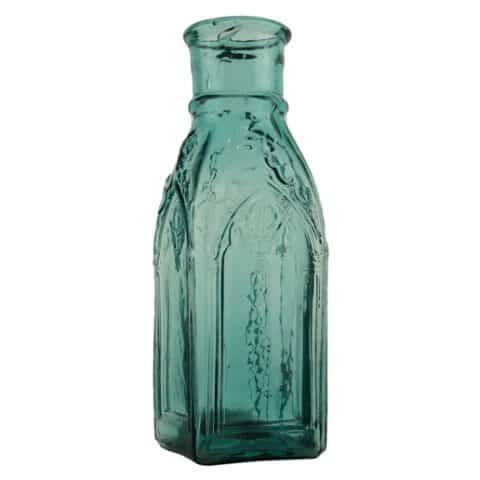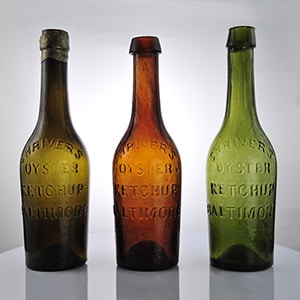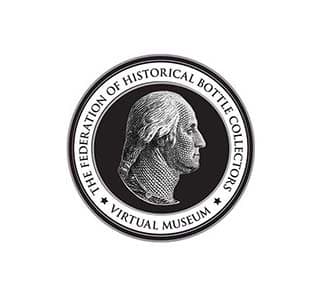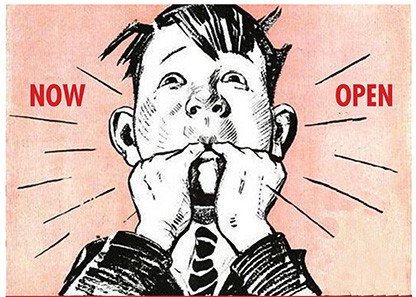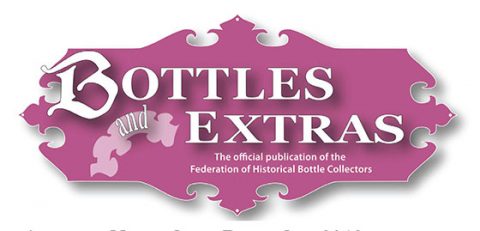Wm. Schotten & Bro. St. Louis Mo.
Wm. Schotten & BRo.
St. Louis Mo.
(Mustard)
Wm. Schotten & Bro. Mustard and Spice Mills
William and Christian Schotten, St. Louis, Missouri
Aquamarine Barrel
Provenance: Lou Pellegrini Collection
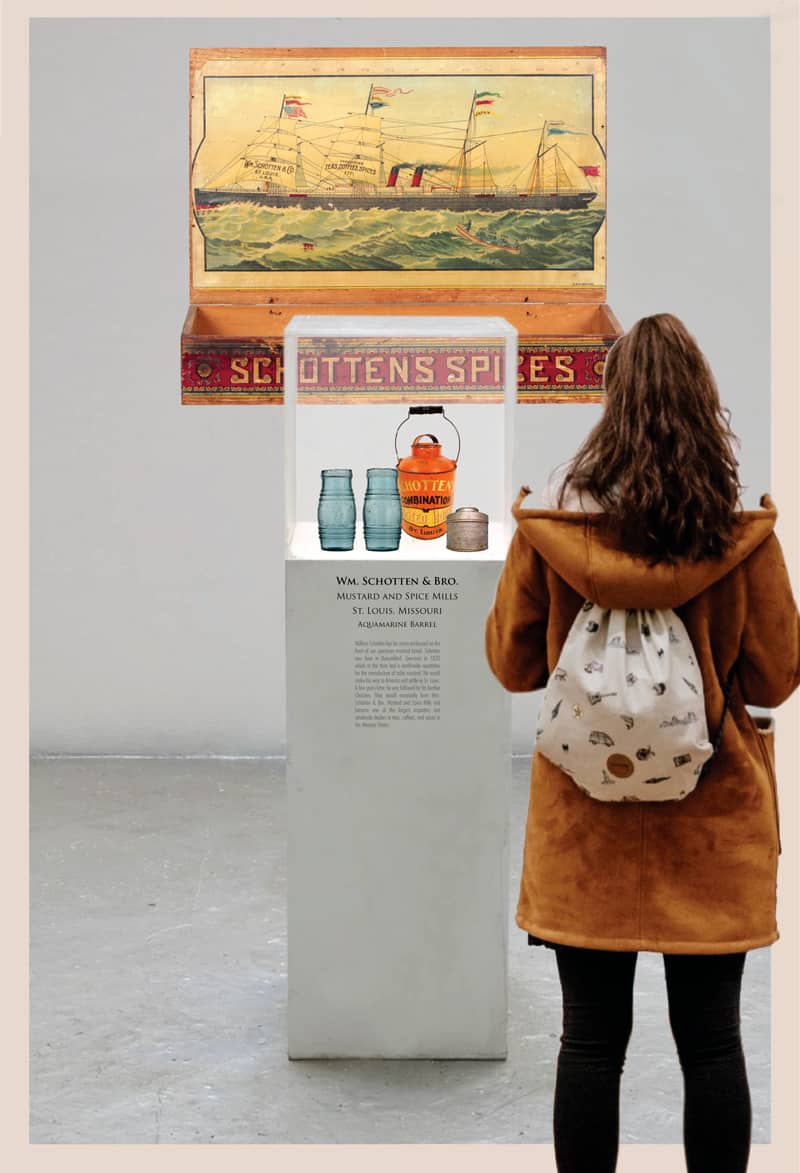
William Schotten has his name embossed on the front of our specimen mustard barrel. Schotten was born in Duesseldorf, Germany in 1820 which at the time had a world-wide reputation for the manufacture of table mustard. He would make his way to America and settle in St. Louis, Missouri. A few years later, he was followed by his brother Christian. They would eventually form Wm. Schotten & Bro. Mustard and Spice Mills and become one of the largest importers and wholesale dealers in teas, coffees, and spices in the Western States.
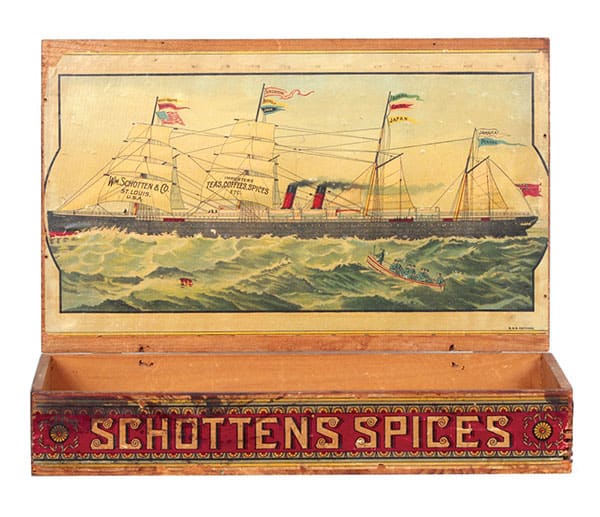
Our container is embossed ‘WM. SCHOTTEN’ in an arch on the face of the barrel. The ‘M’ of Wm. is smaller, raised, and underlined. There is a centered embossed ‘& BRO.’ copy that is in the position of a barrel bunghole. The ‘O’ of Bro. is smaller, raised, and underlined. In an upward arch, on the third line, is the embossed copy ‘ST. LOUIS MO.’ The ‘T’ of St. is smaller, raised, and underlined. The ‘O’ of Mo. is smaller, raised, and underlined. There are three open-spaced rings beneath the copy and three open-spaced rings above the copy. A large square ring encircles the crude mouth of the almost 5-inch tall x 2″ wide jar. The reverse is blank and was probably where a paper label was applied.
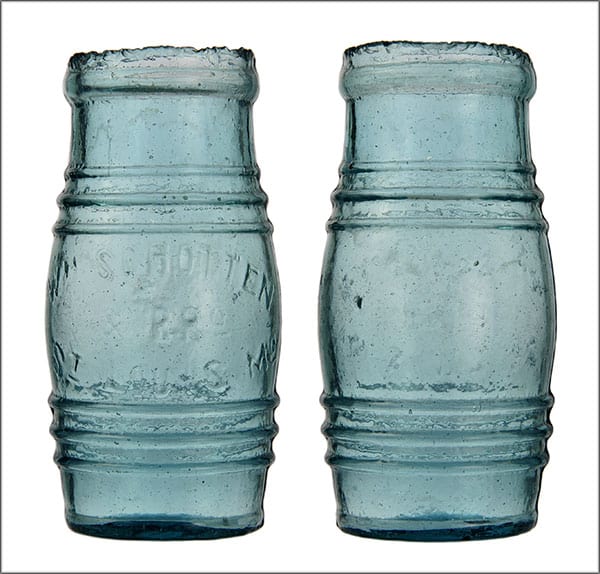
See other mustard jars in the museum such as G. K. Mustard and H. Baader Philadelphia.
Only eighteen German families lived in St. Louis in 1833 and by 1837 that number grew to 6,000 Germans. By 1850, St. Louis’ population of 77,860 included 22,000 German immigrants. Most came to avoid political oppression and were looking for land to escape crowding, lured to Missouri by romanticized descriptions of the state through the Giessen Emigration Society which described it as the American Rhineland.
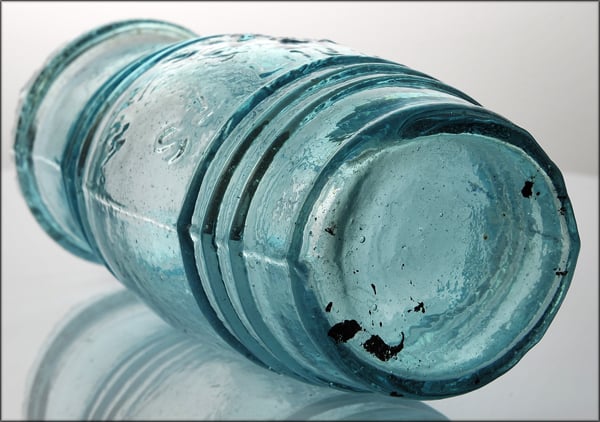
At the present site of the historic Cupples Station, just a few blocks south of downtown St. Louis stood in former years, the Center Market House, which had a large open space in front, occupied by vegetable and other market stands. In 1847, a young William Schotten appeared with a chip basket on his arm, containing a few dozen small bottles filled with mustard, which he had ground and prepared himself with the use of a hand mill. He came every day to sell his mustard to the eager housewives, who would flock to his stand. The demand for his quality mustard grew so much that it allowed him to purchase a horse and wagon and sell his mustard all over the growing city. He would also start a small mustard factory located at 45 South Third Street.
William Schotten would marry Wilhelmina Elisabeth Herberg on August 13th, 1857 in St Louis, Missouri. “Mina” as she was called, was almost 20 years younger than William. They would have four children, Hubertus, Julius, Henry, and Henriette.
This was the modest beginning of Wm. Schotten & Co. which formed in 1860. They would also operate a Grist Mill at No. 2, the southeast corner of North Market Street which was not too long after, destroyed by fire. The firm again resumed business, locating at 105 S. Second Street. 1862 was an important year as this was when they began to handle coffee.
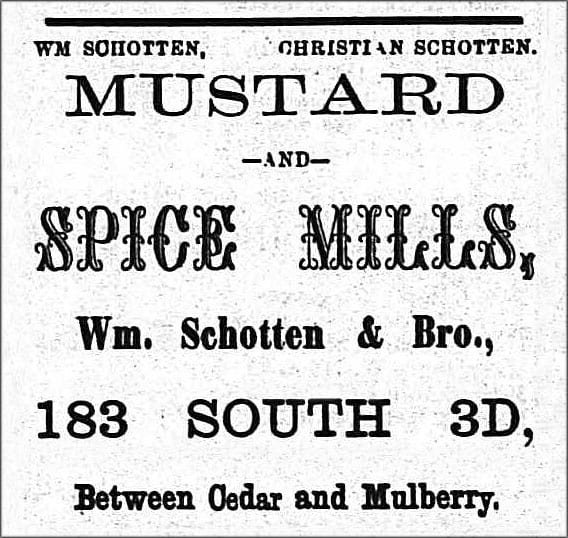
When William’s brother Christian arrived, he became William’s partner and the new partnership was called Wm. Schotten & Bro. which is embossed on the face of our bottle. The Mustard and Spice Mills relocated again to 183 South Third Street on the corner of Third and Cedar Streets. The business would grow from year to year so all these address changes were required to meet the demand.
A look at early 1860s records reveals that William Schotten was a mustard manufacturer on July 1, 1863, according to U.S. Civil War Draft Registrations Record. United States IRS Tax Assessments for 1863 and 1864 state William Schotten & Bro., Mustard, located at No. 183 South 3rd Street in St. Louis, Missouri.
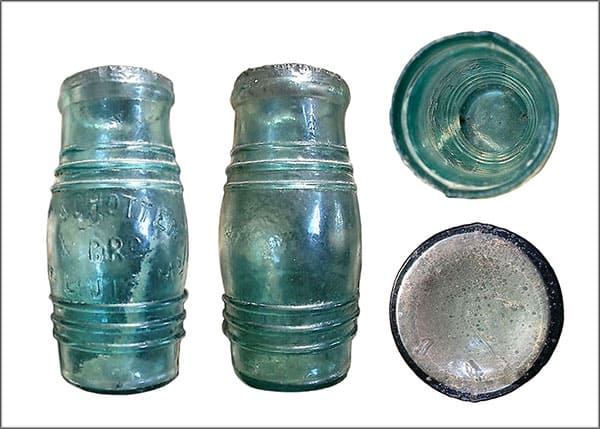
While William Schotten started with mustard, he and his brother expanded into the preparation of spices followed by catsup and sauces. Wm. Schotten & Bro. became more and more known in the city and region. Christian would die in August 1866 and by 1867 it was back to Schotten & Co. William Schotten had replaced Christian with Henry Vesborg as a partner. Next to their directory listing was Mustard and Spice Mills, 738 South 3rd Street.

Eventually, the two sons of William Schotten, Hubertus, and Julius Schotten succeeded their father as William Schotten died on September 6, 1874. The establishment had become so extensive as to justify a further branching out. Coffee roasting was made a specialty, and so great was the success in this line that this department became the most important of all.
The fiftieth anniversary of Wm. Schotten & Co. occurred in 1897 which coincided with the Mustard and Spice Mill taking possession of a magnificent new building on the southeast corner of Broadway and Clark Avenue, erected for the use of the firm. The interior arrangements were for the roasting, granulating, and grinding of coffee and the preparation of the various other articles in which the house specialized, including the importation and sale of teas, the manufacture of baking powder, culinary herbs, etc.
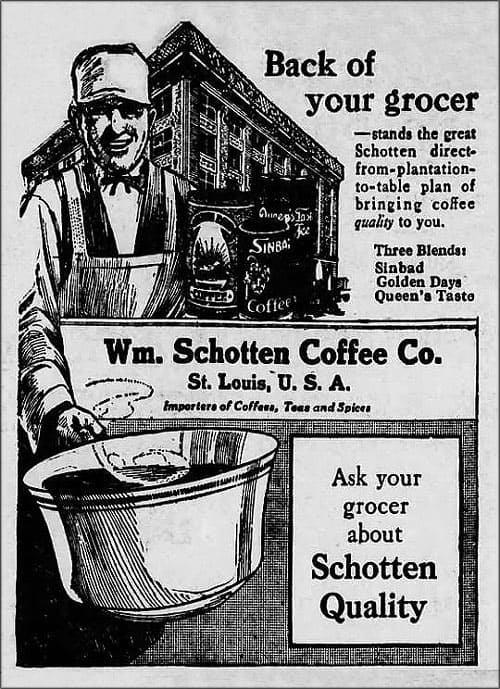
The two sons conducted the business side by side until the demise of the older, Hubertus, on September 22, 1898. At that time, Julius J. Schotten became the sole proprietor of the establishment. He was described as a very active and intelligent businessman of the highest integrity, of culture, and the most affable manners, being a graduate of St. Louis University.
The company incorporated in 1913 and upon the death of Julius Schotten in 1919, control passed to his two children, Zoe L. Schotten and Jerome J. Schotten. Jerome would buy out his sister’s share of the firm in 1925 and become president. An arrangement was made before the death of Julius Schotten that in case Jerome Schotten did not have a son to succeed him in the business, the company should go out of existence upon his death.
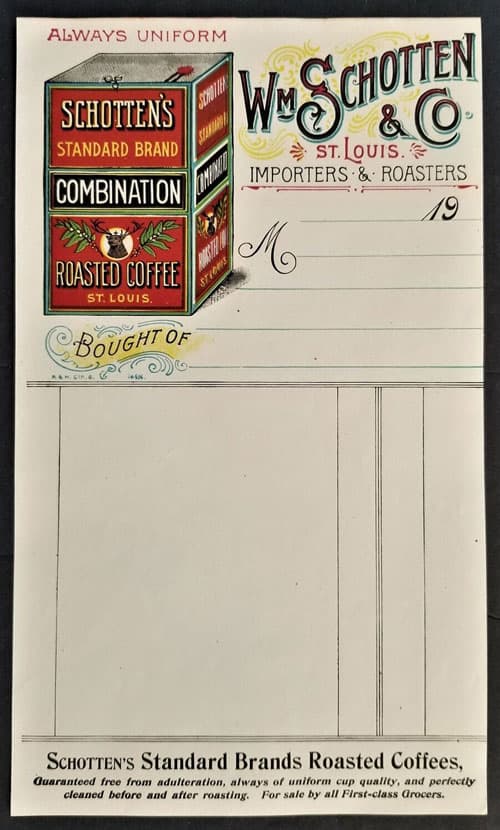
Primary Image: Wm. Schotten & Bro. St. Louis, Mo. mustard barrel imaged by the FOHBC Virtual Museum west coast studio by Gina Pellegrini.
Support: Reference to American Bottles and Flasks and Their Ancestry by Helen McKearin and Kenneth M. Wilson, Crown Publishers Inc., New York, 1978.
Support: Reference to Ketchup Pickles Sauces – 19th Century Food in Glass by Betty Zumwalt
Support: Reference to Mercantile, Industrial and Professional Saint Louis: Illustrated, Ernst D. Kargau, Nixon-Jones Ptg. Company, 1903
Support Image: Schotten’s Spices Box. Very early wooden display box for Wm. Schotten Co.’s (St Louis, Mo) spices, featuring beautiful, early, multi-color paper label inside of Co.’s trademark ship. Sold at: Wm. Morford Antiques.
Join the FOHBC: The Virtual Museum is a project of the Federation of Historical Bottle Collectors (FOHBC). To become a member.

